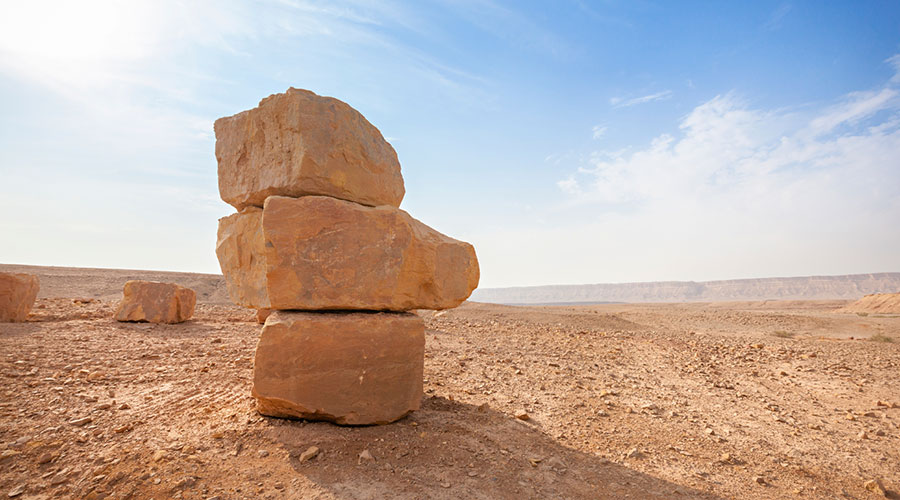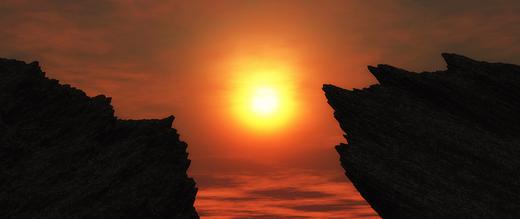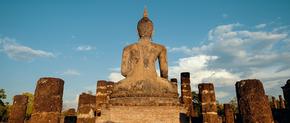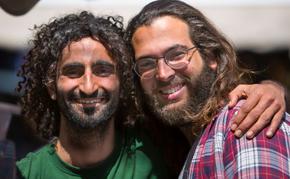The views expressed in our content reflect individual perspectives and do not represent the authoritative views of the Baha'i Faith.
Set thine heart towards Him Who is the Kaaba of God, the Help in Peril, the Self-Subsisting, and raise thou thine hands with such firm conviction as shall cause the hands of all created things to be lifted up towards the heaven of the grace of God, the Lord of all worlds. – Baha’u’llah, Epistle to the Son of the Wolf, pp. 17-18.
In checking the Qur’an, the Muslim hadiths, and other historical sources, one discovers that Abraham did not forget about Hagar and Ishmael after they settled in their new home.
He returned to visit them at least once, and maybe as many as four times. During one of these visits, Abraham and Ishmael were directed to a site, close to the well of Zamzam, where God wanted them to erect a sanctuary. The directions for building it were quite precise. It was to be in the form of a cube and oriented so that the four corners were in line with the four points of a compass: north, east, south, and west.
Abraham and Ishmael were also directed to put something inside the sanctuary—an undistinguished rock about twelve inches in diameter that was placed at the eastern corner, perhaps to mark the direction to which one should turn in prayer, perhaps as a symbol of abandoning carved idols, or perhaps to mark this as the “east” where Ishmael would live and Muhammad, his descendant, would be born. The sanctuary was called the Kaaba (the cube) and it became a holy site of pilgrimage for those who continued to remember Abraham, a group that included Ishmael’s children and grandchildren as well as their cousins, the Jewish descendants of Isaac.

The sanctuary of the Kaaba and the events associated with it are so sacred to religious history that King David apparently speaks of them in the Book of Psalms, describing the way in which Abraham found a home where Hagar could build a nest for her son. He gives special pathos to the verses by a clever play on words; he substitutes a homophone—Baca—for the name of the town in which Hagar settled (Mecca was then known as Becca or Bakkah). Because Baca means Valley of Weeping or Valley of Lamentation, it evokes the memory of Hagar’s bitter tears in a way that the straight use of Becca or Bakkah could never do. King David also seems to look both behind and ahead when he says that those who pass though the valley (i.e. Abraham and, later, Muhammad) make springs of water—divine and physical—begin to flow. Here are the verses:
Even the sparrow has found a home, And the swallow a nest for herself
Where she may have her young—
A place near your altar, o lord Almighty, my King and my god. Blessed are those who dwell in your house; They are ever praising you.
Blessed are those whose strength is in you, Who have set their hearts on pilgrimage.
As they pass through the valley of Baca,
They make it a place of springs. – Psalms 84:3–6.
Muhammad reconfirmed the sacredness of the Kaaba in the Qur’an with this description:
The first temple that was founded for mankind, was that in Becca, Blessed, and a guidance to human beings. In it are evident signs, even the standing-place of Abraham: and he who entereth it is safe. – Qur’an 3:90–91.
After the passing of Abraham and Ishmael, monotheism—or at least some version of the faith that Abraham had taught and modeled—was practiced by many of the people who lived near the Kaaba. When the descendants of Ishmael became so numerous that the Valley of Weeping began to feel crowded, those who moved away often grabbed a stone from the area around the Kaaba and took it along to use as a foundation for erecting a place of worship in their new homes. Alas, the true meaning of the stones and of the original sanctuary was lost as information was passed from generation to generation.
Slowly but steadily, the worship of a single God degenerated into the polytheistic worship of various tribal gods and goddesses, and those who still visited the Kaaba often desecrated it by littering the area with their favorite idols. Even the spring of ZamZam, whose slightly brackish liquid had eased the dusty throats of thousands of pilgrims, was abandoned in favor of fresher-tasting water from newer wells in other parts of the city. Sand blew in, covering the wellspring opening, and after a while, no one could remember exactly where ZamZam had been. Nor did they care.
“God’s gift was no longer a necessity, and the Holy Well became a half-forgotten memory” until Muhammad’s grandfather was led, by means of a dream, to rediscover it. A few years later, in AD 630, Muhammad boldly destroyed all of the idols around the Kaaba—said to number three hundred and sixty—and had the structure cleaned and repaired. He also designated the rock inside the Kaaba as the Qib’lih, or point of adoration, to which Muslims should turn during prayer. Five times a day, millions of faithful Muslims around the world still bow their heads toward the rock once touched by the hands of Abraham.
Next: The Eternal Mystery of Sacrifice
You May Also Like
Comments

















This has been so enlighting and heartwarming and has endoured me with further knowledge. Thank you